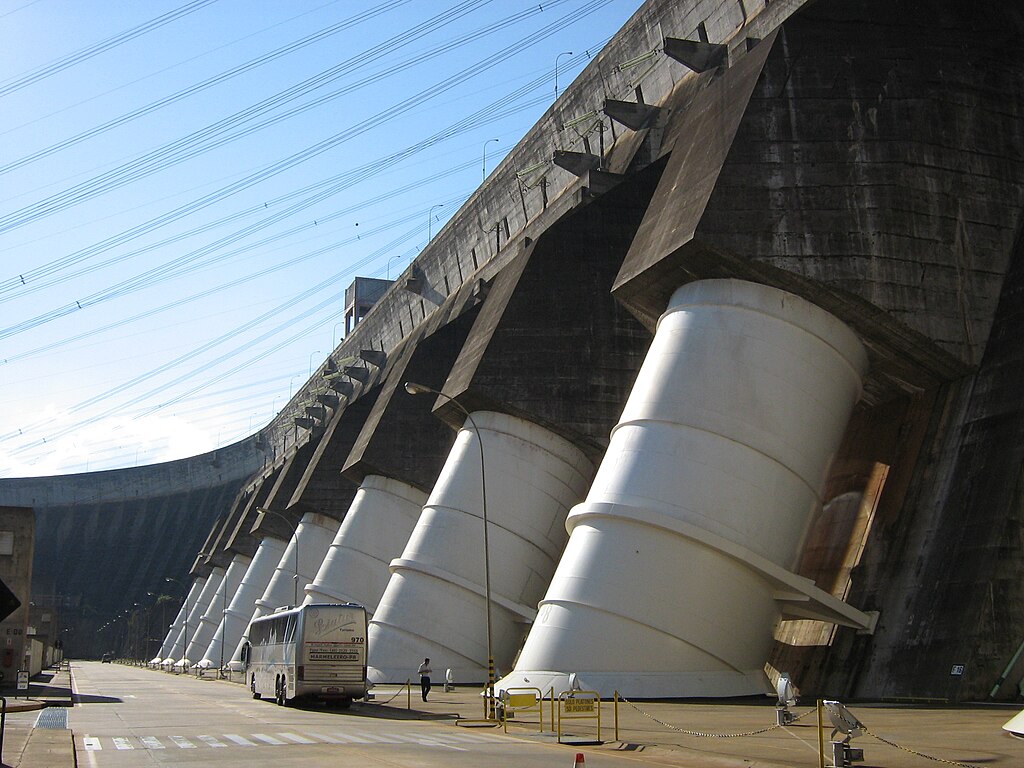In a surprising turn of events, Paraguay’s energy landscape is adapting to the burgeoning world of cryptocurrency mining, shedding initial concerns over its impact on the nation’s power grid. Recent statements from Félix Sosa, the President of the National Electricity Administration (ANDE), at a blockchain technology conference highlighted that crypto mining operations are proving less burdensome than originally anticipated.

The Itaipú Dam — a hydroelectric power giant in South America. (Source: Wutzofant [CC BY-SA 3.0])
Amid growing concerns about energy consumption and sustainability, Sosa reassured the public that the electricity drawn by Bitcoin miners, which hovers around 700 megawatts, does not interfere with the power supply meant for everyday residents. Instead, these miners have been strategically positioned in designated areas to minimize disturbances in regions that could experience power shortages.
What does this mean for the future of mining in Paraguay? In Sosa’s view, the energy demand projected for 2025—which is expected to be equivalent to just one and a half turbines of the Itaipú Dam—proves that the nation is well-equipped to handle the balancing act between economic opportunity and community energy needs.
Paraguay’s central bank held its benchmark interest rate unchanged at 6% a week after it raised its outlook for inflation and economic growth https://t.co/V31pTte10p— Bloomberg (@business) July 22, 2025
The Itaipú Dam isn’t just any hydroelectric facility; it ranks as one of the largest in the world. Its 20 turbines generate significant power—mostly for Brazil, while 10 others feed surplus energy back into Paraguay. With this extensive capacity, ANDE has welcomed the idea of allowing Bitcoin miners to tap into this “abundant, renewable, and affordable energy,” presenting a profitable avenue for both the miners and the national grid.

The Paraná River gracefully meanders between Paraguay and Brazil, showcasing nature’s beauty alongside massive infrastructure. (Source: Deni Williams [CC BY 2.0])
As Bitcoin mining continues to gain traction in the region, ANDE has outlined plans to boost mining operations’ capacity to 1,000 MW by late 2025. This expansion could reportedly generate around $240 million in revenue for the administration. Nonetheless, skepticism remains among experts. Engineer Axel Benítez expressed concerns over the accuracy of these projections, arguing that the actual consumption reported by crypto miners was significantly lower, suggesting that a potential rate hike for miners could be on the horizon.
But it’s not just the numbers causing a stir. Within communities, discontent is bubbling beneath the surface. Residents from districts like Santa Lucía in Villarrica are voicing their grievances about the relentless noise from mining operations, which they claim has adversely affected their quality of life, particularly for families with special needs children. While legal miners are welcomed by authorities, the battle against illegal mining persists, with ANDE revealing that it loses a substantial portion of energy to these unregulated operators. Last year alone, over 10,000 mining rigs were confiscated, highlighting the challenges the energy authority faces.
Breaking news: Donald Trump’s administration has denied permission for Taiwan’s President Lai Ching-te to stop in New York en route to Central America, after China raised objections with Washington about the visit https://t.co/FgcckTOfMa pic.twitter.com/kjjT9CqSBy— Financial Times (@FT) July 28, 2025
With all these developments, where does the future lie for Bitcoin mining in Paraguay? As the interest in digital currencies grows, so too does the conversation surrounding responsible energy consumption. The balance between economic benefits and community impact will be crucial in shaping policies as the country navigates its path in the cryptocurrency world. For those watching closely, the unfolding narrative of crypto mining in Paraguay offers a unique glimpse into how energy and innovation can coexist—but only if done respectfully and sustainably.
Stay connected for more updates on cryptocurrency developments in Paraguay and beyond. The future of digital currency holds endless possibilities, and the stories from this region are just beginning to unfold.
